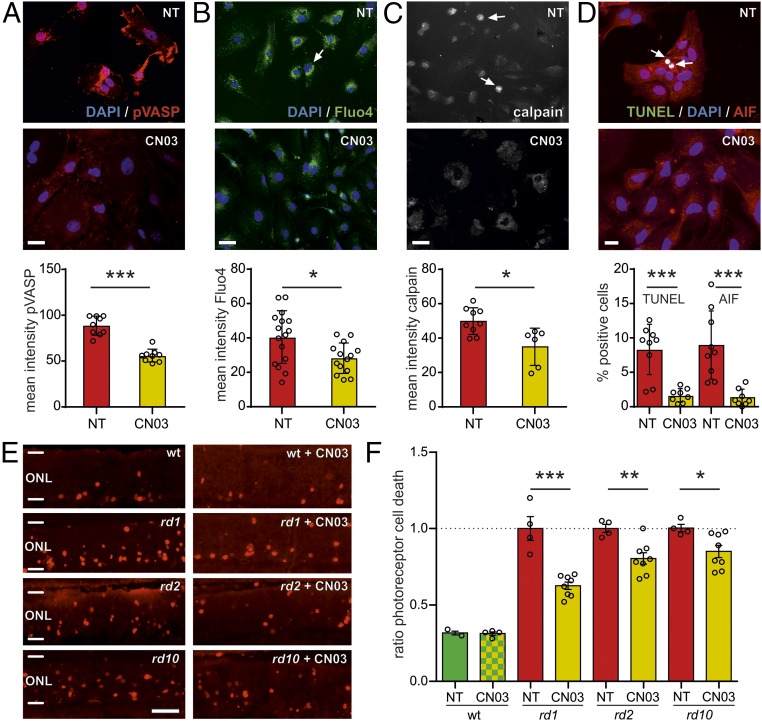Fig. 4.
CN03 acts on PKG and CNGC and reduces photoreceptor death in three different in vitro RD models. (A–D) Photoreceptor-like cell cultures derived from rd1 mice (NT, red bars) and effects of 50 µM CN03 (yellow bars) on degeneration markers (n = 9–15 cell cultures obtained from three to five independent preparations). (A) CN03 reduced the phosphorylation at serine 239 of the PKG-target VASP (pVASP, red). (B) Fluo-4, AM Ca2+ imaging (green, arrow indicates a cell with high Ca2+) indicated reduction in intracellular Ca2+. (C) Calpain protease activity assay brightly labeled condensed dying cells (arrows). Mean calpain labeling intensity was reduced after CN03 treatment. (D) AIF (red) translocation from mitochondria to nuclei (blue) and cell death, as assessed by the TUNEL assay (green), was restrained by CN03 treatment (triple-stained nuclei shown in white; see arrows). (E) CN03 (50 µM) had no adverse effects in P11 organotypic explants derived from WT (top row). In P11 rd1, P19 rd2, and P18 rd10 explants CN03 reduced the number of dying cells in the ONL. (F) Quantification of the data from E; ratio (treated/NT) of TUNEL-labeled cells (NT WT, n = 2 separate retinal explant cultures; CN03 WT, 4; each NT mutant, 4; each CN03 treated mutant, 8; rd1 data from Fig. 2G shown for comparison). Error bars in A–D and F: SEM. Statistical comparisons: Student’s t test (unpaired, two-tailed). NT, not treated. (Scale bars: A–C, 50 µm; D, 20 µm; E, 50 µm.) *P ≤ 0.05, **P ≤ 0.01, ***P ≤ 0.001.

